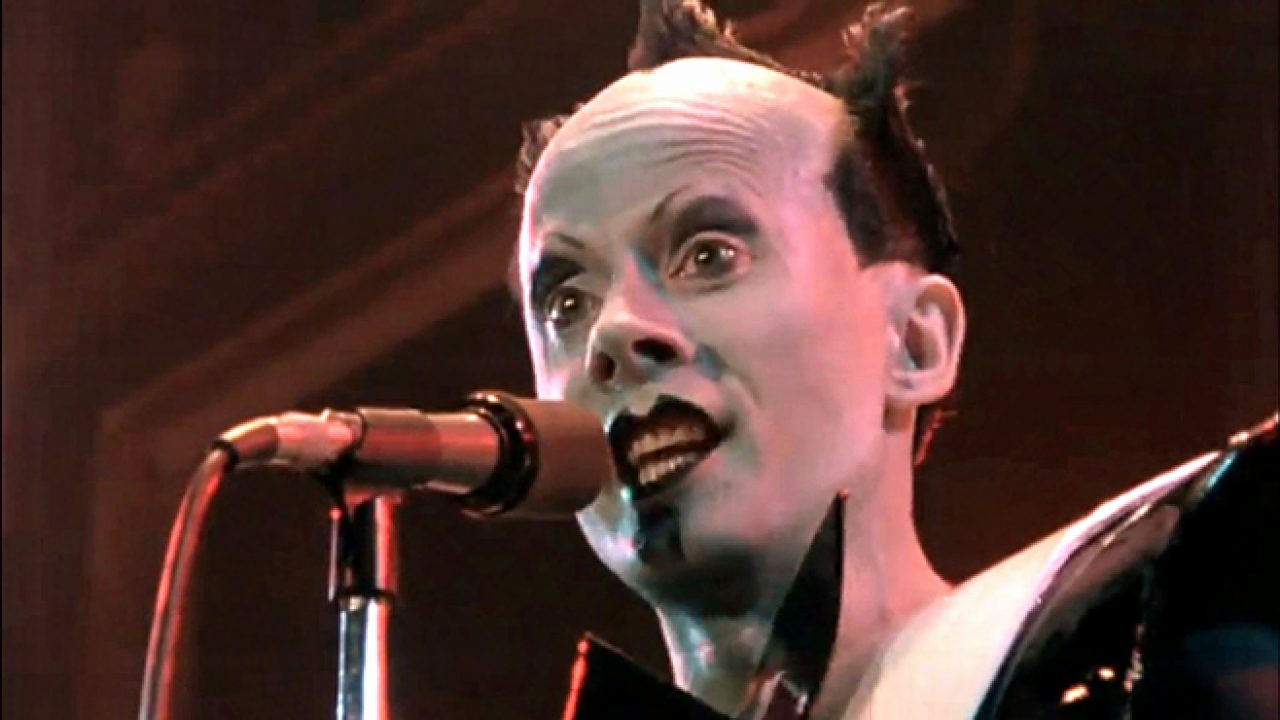By Chlotrudis Independent Film Society
Rating: 3.9
Director: Andrew Horn

Country: germany
Year: 2005
Running time: 98
IMDB: http://www.imdb.com/title/tt0402406/combined
Chris says: “Whenever I write a music review, I usually end up drawing clever/lazy comparisons to other artists, but I honestly wouldn’t know where to begin with Klaus Nomi. A beguiling figure in New York’s new wave scene in the late ’70s, most people ended up likening Nomi to an alien simply because he seemed so unlike anything else on this planet. With his robotic charisma, layers of makeup (at least ten times more than Adam Ant ever wore), outlandish outfits and eerily gorgeous operatic falsetto, Nomi made even the most extreme hangers-on in Andy Warhol’s Factory look like frumpy Midwestern housewives (and, he was a pretty accomplished pastry chef to boot).
“Yet, much of the world barely remembers him. Andrew Horn’s documentary is more a loving, almost elegiac effort to reintroduce this cult figure into a post-Marilyn Manson universe than an attempt to figure out the man behind the mask and explain his artistic significance. Horn charts Nomi’s progression from unassuming Bavarian immigrant to celebrated cabaret scenester to weird, wannabe Europop icon until his AIDS-related death in 1983 with obvious (but acknowledged) debts to BEHIND THE MUSIC and its ilk. The mere fact that, despite his otherness, Nomi’s career trajectory mirrored so many of his more renowned contemporaries is somewhat at odds with Horn’s explicit riffs on the alien theme (he uses scenes from the sci-fi classic IT CAME FROM OUTER SPACE as a framing device). The film also meanders and focuses too much on talking head recollections, indulging in Horn’s artier tendencies while losing some of its punch.
“Still, your enjoyment will obviously depend on how well you take to Nomi himself. Although I’m not ready to rush out and acquire the man’s back catalogue, I found the vintage footage Horn employed often mesmerizing: the grainy video of Nomi’s early performances at Max’s Kansas City, an unlikely profile on a local news station, a mysterious concert with an unidentified, regal symphony orchestra, and, most spectacularly, a 1979 gig singing backup for David Bowie on SATURDAY NIGHT LIVE that borders on surreal, subversive overload. Even at his archest, it’s apparent that Nomi carried the merited air of an otherworldly, tragic diva, as if he somehow knew he was just too unique to last long in this world. And I’d rather hear his bonkers interpretation of ‘Falling in Love Again’ again than Marlene Dietrich’s. 3.5 cats”
Barbara says: “This documentary about Klaus Nomi is interesting. His style was not for everybody but what amazed me is the
reception he got in the Midwest. Despite the fact that he was truly ‘out there,’ there was something that Middle America found compelling. He came across to me as a tragic talent and, despite all the recollections of friends and music industry people, I don’t think anyone ever really knew the person behind the performance artist. 4 Cats”
Thom says: “This film totally overwhelmed me, not so much because it was a great film, but because it made me into a Klaus Nomi fanatic. Back in the day I was interested in him, and he even had a big hit with me in DING DONG THE WITCH IS DEAD, but I missed him in concert, so this film enabled me to see what a magnetic personality he was, along with his impressive falsetto voice. I’ve since bought his two CDs. 4.5 cats. His filmed performance, with an orchestra, singing THE COLD SONG is magic of the highest order.”
Bruce says: “Klaus Nomi, in spite of being somewhat of a flash in the pan, remains one of the most unique talents in pop music
history. He certainly is a marvelous subject for a documentary. Andrew Horn does a decent job of presenting the man, his music and the New York music scene in the late 70’s and early 80’s. Nomi began his career at Irving Plaza performing a famous Callas aria from Rossini’s La Cenerentola in his trademark falsetto. As his career took its shape moving into new wave pop, Nomi perfected the use of carnival like make up and outlandish costumes to create his baroque sci-fi image.
“Surprisingly there is an abundance of performance footage which adds considerable strength to the understanding of Nomi’s ability to mesmerize his audience. Horn adds talking heads to fill in the gaps and explain how Nomi stumbled upon a career and how his bizarre persona found its shape. The segues from performance to commentary are often seamless with Nomi’s music still playing in the background as people describe events.
“Nomi’s story does lack a certain depth. Nomi had a tremendous drive and an abundance of ego once he got his career in gear. As he gained fame and popularity he abandoned his band members and others who stuck through thick and thin in the early years. Nomi was willing to pay a high price for his success although it is unclear whether he was aware that he was bargaining with the devil. This was not the shy boy who immigrated to New York from Germany. Much of the evidence to support the facts is hearsay. We learn little of what was going on in Nomi’s head.
“With varying points of view, those who ‘knew him when’ all confess that they were not at his bedside when he was dying of AIDS. That concludes Nomi’s story on sad note indeed. The film appropriately ends with Nomi performing ‘After the Fall.’ 3.5 cats”
